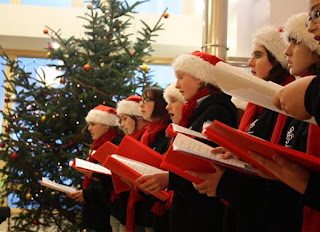Christmas is the season for joy and forgiveness, however it is also full of strange and beautiful traditions we all follow without really understanding.
1 – Mistletoe: Traditionally mistletoe cannot touch the ground between being cut and its removal (it is to be the last of the greens removed from the house after the Christmas season is over). It is supposed to be hung each year to protect the house from fire and any man and woman that met each other under it were obliged to kiss. After each kiss a berry was plucked from the bush, once all the berries were plucked the privilege ceased. The use of mistletoe as a Christmas decoration was common but was not much alluded to or mentioned before the 18th century.

2 – Christmas Trees: The origin of decorating pine or fir trees with apples, roses, candies and colored paper has its roots in the Renaissance and early modern Germany. Its 16th century origins seem to center around Martin Luthur but its widespread popularity followed introduction by various members of the nobility. To decorate a Christmas tree became much more popular and widely accepted in the United Kingdom after Queen Victoria’s marriage to the German Prince Albert.

3 – Christmas Stocking: There is a lot of confusion surrounding where the tradition of Christmas stockings came from but popular legends have found ways to try and explain it. They tell of an old man with three beautiful daughters who had no money to pay for their dowries and so they could not marry. St Nicholas was riding through the village and heard of this story, understanding that the old man would not accept charity he crept down the chimney that night and found stockings that the daughters had hung by the fireplace to dry. Into these 3 stockings he placed a bag of gold each, the next morning the 3 beautiful women and their father were overjoyed and soon after the women were married. Ever since adults and children alike have hung stockings by the fireplace or at the end of their beds to be filled with presents while they sleep, ready to be joyfully opened the next morning!

4 – Candy Cane: According to popular history in 1670 a German choirmaster wished to find a way to get the children to be quiet in his church during Christmas Eve ceremonies. He asked the local sweet maker to make sweet sticks for the children but in order to justify the giving of candy during worship he had the sweet maker add a crook to the tip of each sweet (to resemble the crocks of the three shepherds) and to make them red and white (to reinforce Christian beliefs in the sinless life of Jesus). These delicious candy canes then spread through Europe while being given out at nativity plays. Now they are a popular tradition each year and come in many different flavors, not just the traditional peppermint, which the whole family can enjoy.

5 – Poinsettia: This plant and its associations with Christmas stem from Mexico, where they tell the story of a young girl who was too poor to pay for a present to celebrate the birth of Jesus. Angels inspired her to pick weeds from the roadside to place in front of the church alter and these weeds became poinsettias when beautiful crimson blossoms sprouted from them. From the 17th century onwards friars in Mexico incorporated these bright flowers into their Christmas celebrations, as they believe the flowers have a special symbolism. The star shape of the leaf symbolizes the Star of Bethlehem and the red symbolizes the blood sacrifice through the crucifixion of Christ. Today these beautiful flowers are popular Christmas decorations, with December 12th being National Poinsettia Day in the USA.

http://www.christmas.com/blog/story-mistletoe-christmas-symbols/



























